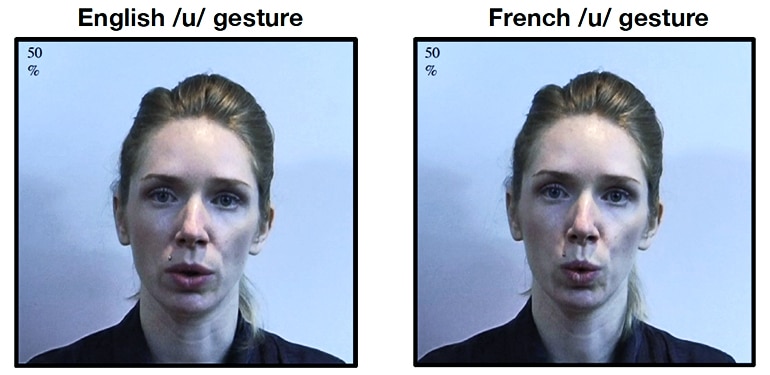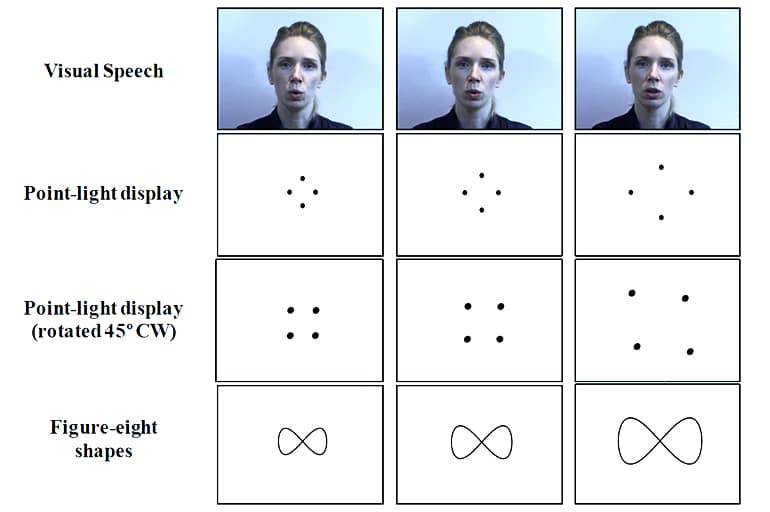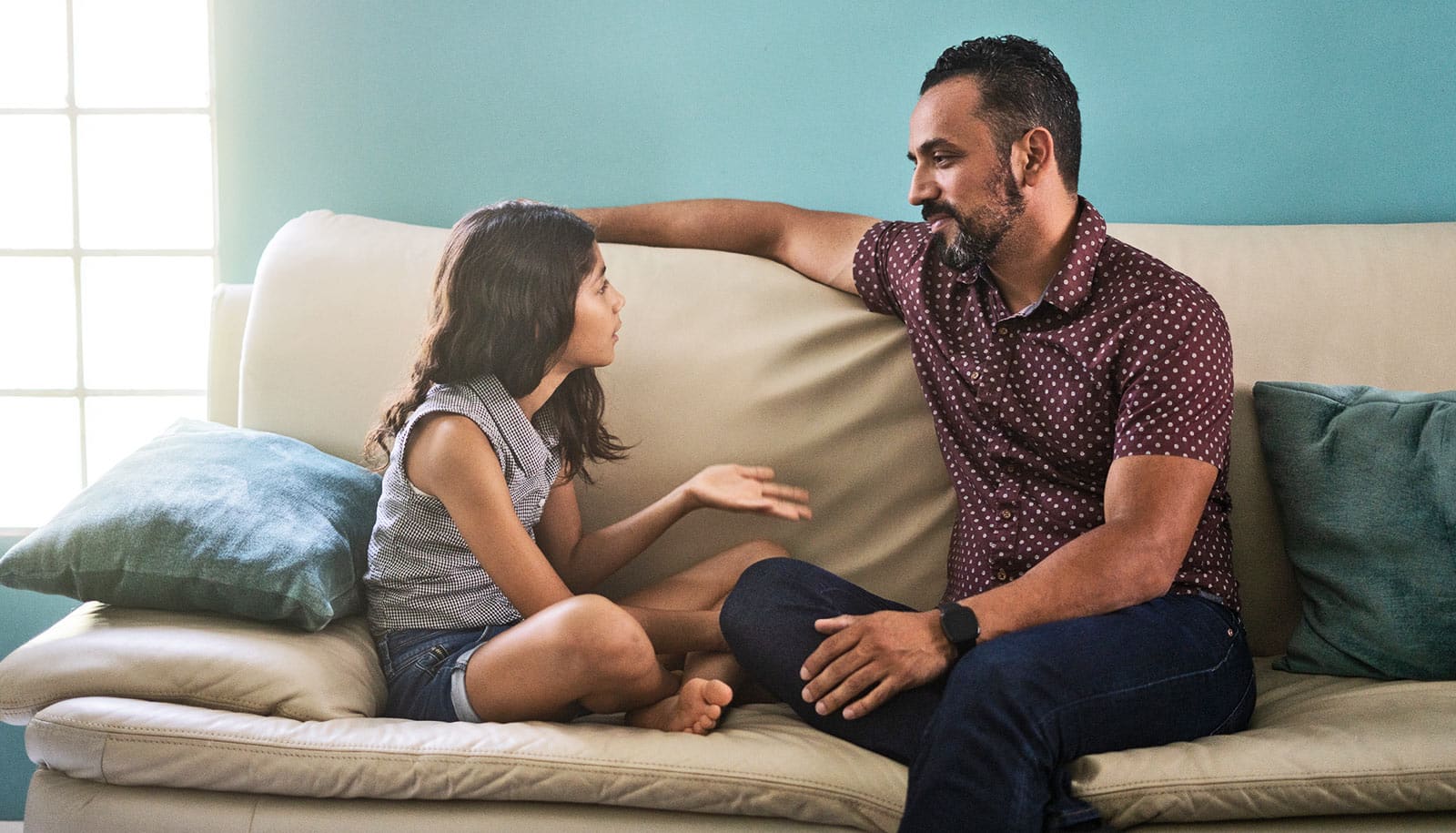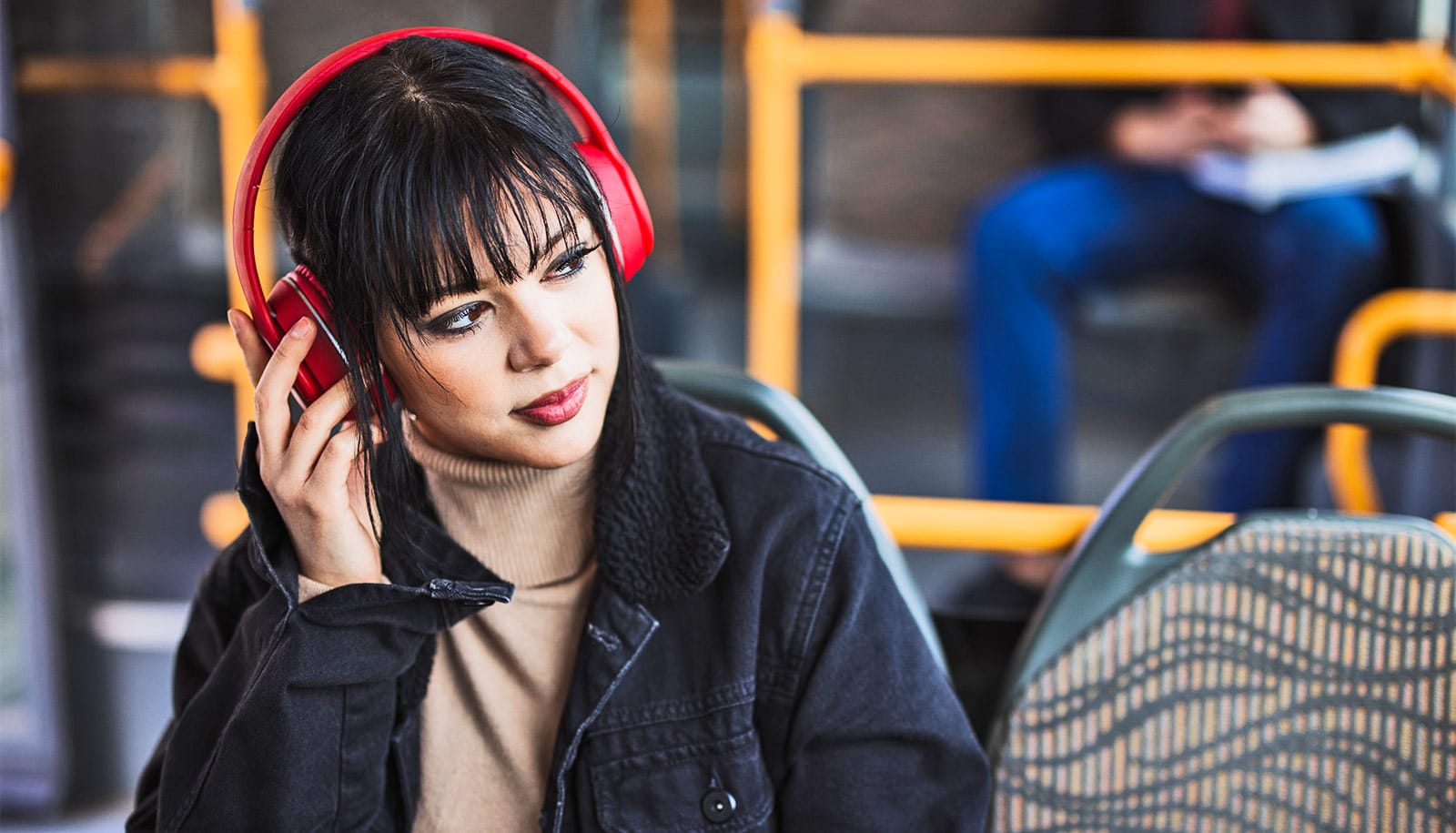The motion and configuration of the lips are key to how people gather information when distinguishing vowels in speech, new research suggests.
For all talkers, except perhaps the very best ventriloquists, speech is accompanied by visible facial movements. Because speech is more than just sound, researchers wanted to find out the exact visual information people look for when distinguishing vowel sounds.
“An important and highly debated issue in our field concerns what is it that we are attending to in speech—what’s the object of perception?” says lead author Matthew Masapollo, who conducted the research as a postdoctoral scholar at Brown University and is a now at Boston University. “Another question that’s debated is whether speech processing is special and distinct from other kinds of auditory processing since it is not purely an acoustic signal.”
Resolving these questions would improve the scientific understanding of how we perceive speech, Masapollo says. That, in turn, could apply to the design of more intelligible online avatars and physical robots, and could even improve computer recognition of human speech and enhance communication devices for the hearing impaired.

(Credit: Masapollo et. al.)
While scads of studies have investigated which audible features of speech are important, Masapollo says, far fewer have looked at which visual components are essential, despite evidence from phenomena as intuitive as lip reading that the sights of speech matter, too.
As reported in the Journal of Experimental Psychology: Human Perception and Performance, when people perceive speech, they closely watch the form and motion of the lips. If either of those cues is missing, their ability to make subtle distinctions between vowel sounds suffers measurably.
“The findings demonstrate that adults are sensitive to the observable shape and movement patterns that occur when a person talks,” says Masapollo, who did the work as a researcher in the lab of senior author James Morgan, a professor of cognitive, linguistic, and psychological sciences.
‘Directional asymmetry’
Earlier this year, Masapollo set the table for the new study when he and coauthors Linda Polka and Lucie Ménard showed in the journal Cognition that people exhibit the same “directional asymmetry” in visually perceiving vowels that they do when hearing vowels: They are better at distinguishing between two versions of the “oo” sound, as in the word “loose,” if the less extremely articulated version occurs first and then the more extreme version second.
If the order is switched, they are much less likely to discriminate them—by sight or sound. While these directional effects may seem like a quirky instinct, they reflect a universal bias favoring vowels produced with extreme articulatory maneuvers. Current research focuses on uncovering what salient features or properties of extreme vowels give rise to these perceptual asymmetries.

It turns out that this asymmetry plays out between French and English, being manifest in the bilingual speech of many Canadians. When speaking French, their articulation of “oo” is produced with more visible lip protrusion and tongue positioning than when making the same vowel sound in English.
For the new study, Masapollo realized that this asymmetry in vowel production and perception provided a great opportunity to determine which visual features matter in distinguishing subtle speech differences. He devised and led five experiments to ferret out exactly what visual information was pertinent to this asymmetry.
Watching the eyes watch the lips
In the first, with help from Brown graduate student and coauthor Lauren Franklin, he employed eye-tracking technology to measure where student volunteers looked when watching videos of a bilingual Canadian woman make “oo” sounds in both French and English. Definitively, people watched the mouth, far more, for instance than the eyes.
But what about the mouth mattered? To determine if motion, rather than simply a particular position, was important, the next experiment presented students with a still frame rather than video.
Brain ‘tunes in’ to rhythm in sign language and speech
In experiment two, volunteers at McGill University tried to distinguish “oo” speech using just still images of the same speaker. Without the cue of motion, the results showed, the asymmetry of French-English or English-French ordering no longer occurred, suggesting that motion is a key component in this instinct of vowel perception.
In the next three experiments, the team continued to investigate which visual aspects of speech perception mattered among groups of student volunteers. In experiment three, the subjects saw not a face, but an array of four dots in a diamond pattern that moved just like the speaker’s lips did. When the speaker pursed her lips to make the “oo,” the dots moved closer together, for example.
Masapollo’s hypothesis was that position and motion might matter together, even if the face isn’t actually represented. In this experiment, people returned to showing the asymmetry suggesting that he was on the right track.
Experiment four was exactly the same but the dot pattern was rotated 45 degrees clockwise, showing more of a square than a diamond. Here the asymmetry didn’t occur, suggesting that the orientation of the dots to represent a speech-making mouth matter.
In experiment five, the motion was represented by a sideways figure eight that would move in a manner analogous to the speaker’s lips. There, too, without even an essential form of a mouth, people didn’t show their instinctual asymmetry of vowel perception. Mere motion, without the form and position of a mouth, was not enough.
“Overall, the picture that emerges is that perceptual asymmetries appear to be elicited by optical stimuli that depict both lip motion and configural information,” the authors write.
Brain signal shows when you understand what you hear
To Masapollo, the results demonstrate that vision makes specific contributions to perceiving speech.
“The findings of the present research suggest that the information we are attending to in speech is multimodal, and perhaps gestural, in nature. Our perceptual system appears to treat auditory and visual speech information similarly.”
In addition to Masapollo, Morgan, and Franklin, the paper’s other authors are Linda Polka, Lucie Ménard, and Mark Tiede.
The US National Institutes of Health, and the Natural Sciences and Engineering Research Council of Canada funded the study.
Source: Brown University



